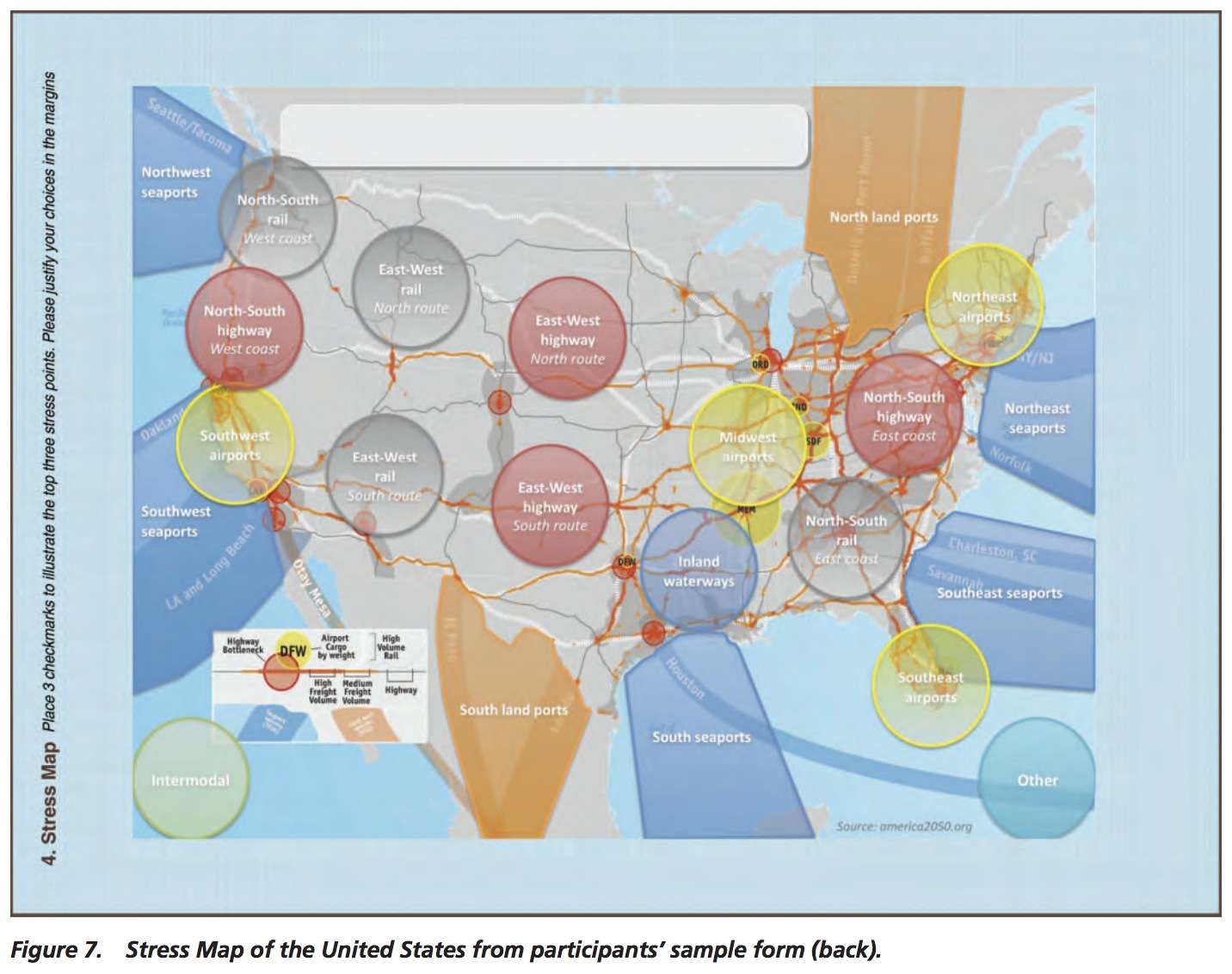TRANSPORTATION RESEARCH BOARD
Introduction & Background
The future rarely moves in predictable, incremental ways. Often seemingly small changes in technology, demographics, regulations, economics, or a myriad of other factors have dramatic and unintended impacts on how any organization (public or private) plans and operates. These nonlinear impacts are very difficult to predict using traditional forecasting methods and techniques since they, by definition, do not follow any historical patterns.
For example, few in April 1956 would have foreseen the global trade implications (and resulting freight infrastructure requirements) of Malcolm McLean’s small experimental move of 58 metal containers on the ship the Ideal-X from Newark to Houston. What had been intended as a way to reduce traffic congestion on the highways through short sea shipping along the East Coast ended up playing a key role in making offshoring of manufacturing in low-cost locations across the globe economically viable. Containerization is ultimately the driving force behind the tremendous infrastructure projects at and adjacent to ports on the East and West Coasts as well as the Gulf. While this impact might seem obvious in retrospect, it certainly was not at the time.
Are we facing a similar situation today? In 10, 20, 30 years from now, will people look back and be amazed that we were unable to predict the full impact that some new innovation had on the economy? Probably. It is never easy at any point in time to be able to predict which, out of all of the possible future outcomes, will actually happen and should therefore be planned for.
For example, consider the effect of digitization. We are all familiar with the impact that digitization has had on recorded music, movies, and books. What was once a physical product that had to be sourced, manufactured, and distributed has been transformed into a purely digital form that can be reproduced and delivered almost instantaneously at close to no cost. The reduction in the number of physical retailers, increased incidence of piracy, and the collapse of much of the logistics supporting these industries have been well reported. The bankruptcy of such stalwart companies such as Blockbuster (video rental), Kodak (photography), and Borders (book retailer) is an example of how disruptive these step changes can be to companies and industries. All information-based products seem to be headed in the same direction.
However, what about physical products? Will personal microfabrication technologies, such as additive manufacturing or three-dimensional printing, become widely adopted and transform the consumer package goods industry in a similar fashion? Imagine if each small city or town had the ability to manufacture (and personalize) the majority of the products used every day within their own community—using only basic raw materials. How would that change the industry, the logistics providers, and the retailers? What would the supporting infrastructure need to look like? Or will it never take hold?
It is not just technology. Consider the impact of changes in government regulations. Suppose that environmental regulations within the next 20 years require the tagging and tracking of potentially hazardous or recyclable materials with the retailer being responsible for safe disposal. What new challenges and market opportunities would this create? Again, how would the underlying freight transportation infrastructure need to change?
Or demographics. The percentage of people worldwide living within urban areas has increased from 30 percent in 1950 to almost 50 percent today—with forecasts putting this at 60 percent by 2030. The distribution of this population between top-tier and second-tier cities is less certain, however. In the United States (U.S.), for example, of the 15 fastest growing urban areas from 1990 to 2010, only one was in the top in 1990. The idea of urban logistics is no longer just a problem for New York City, Los Angeles, and Chicago. How will this increased urban concentration of residences across the United States affect the way products are manufactured and distributed? Will this mean that the local urban governments will need to take ownership of the last mile distribution? How will the underlying freight transportation infrastructure need to adapt to meet these changing requirements?
There are countless other examples of potential step changes in economics, energy, regulations, technology, and other areas that can have tremendous impacts on how businesses and other organizations operate in the future.
Download full version (PDF): Scenario Planning for Freight Transportation Infrastructure Investment
About the Transportation Research Board
www.trb.org
The mission of the Transportation Research Board is to provide leadership in transportation innovation and progress through research and information exchange, conducted within a setting that is objective, interdisciplinary, and multimodal.
Tags: National Academies, Transportation Research Board, TRB, TRB of NA







 RSS Feed
RSS Feed